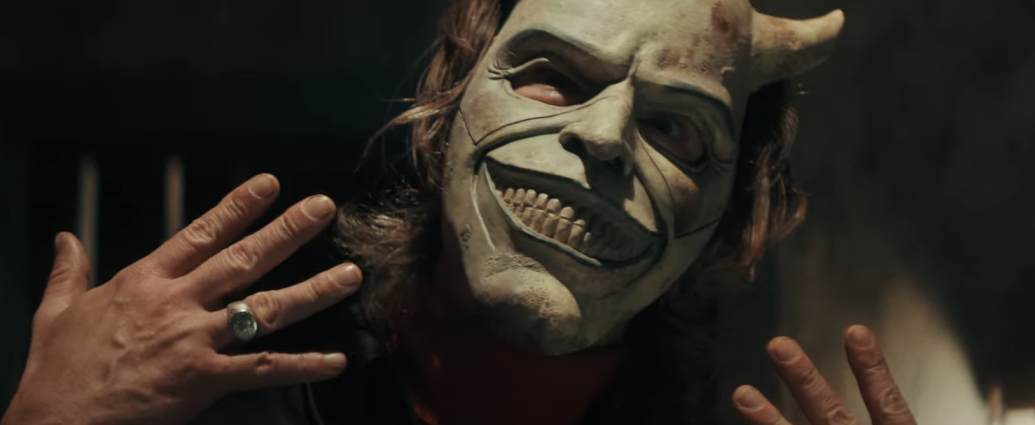Tackling the collection I have of Hammer Horror isn’t the most strategic method of whittling down the backlog of movies on my shelf I want to share my opinion about (I own an eight-pack and conquering it will only free-up a single space), but it is a brand I have been eager to engage with for a while (check out my reviews of Captain Clegg and Brides of Dracula).
Hammer Film Productions is a British film company I want to love as any horror connoisseur would, but I haven’t yet done (as my prior reviews can attest). The Curse of the Werewolf is a 1961 British horror film based on the novel The Werewolf of Paris by Guy Endore.
The film was shot at Bray Studios and repurposed sets initially meant for a Spanish inquisition themed film called The Rape of Sabena that was shelved. Thus, the setting of this film was changed to Madrid instead of Paris in-order to save on the budget.
The film was directed by Terence Fisher and written and produced by Anthony Hinds. I haven’t talked about either of these men’s work yet, but I will undoubtedly mention Fisher again as I delve deeper into the Hammer brand.
I wouldn’t say I was necessarily drawn to The Curse of the Werewolf for any particular reason. I have always enjoyed Dracula or The Invisible Man, or, even, Frankenstein, more than I do Werewolf or The Wolf Man myths. I do appreciate them in a classical respect, however.
The Curse of the Werewolf and its narrative is more elaborate than I initially anticipated, which I have observed as a reoccurring trait in a lot of Hammer. Whether that is complimentary or not is subjective and I imagine will depend on the film. I anticipated The Curse of the Werewolf as more simple and straightforward, whereas the film itself in actuality has a lot of detail, some of them feel frivolous and some of them feel admirable in their ambition.
Set in 18th century Spain, The Curse of the Werewolf begins with a beggar wandering around a village in search of patronage, in doing so, he happens upon a nobleman’s wedding and is toyed with and subsequently imprisoned. The beggar’s sole human contact is with the jailer and his mute daughter (played by Yvonne Romain), but, in time, it shows he has been driven mad by his confinement, exemplified by what happens next. The woman is wrongfully imprisoned when a nobleman makes advances toward her and refuses them. The beggar rapes her and, then, dies.
The woman is released the next day and murders the old man who imprisoned her and flees into the forest. She is discovered at the brink of death by a gentleman-scholar named Don Alfredo Corledo (played by Clifford Evans) and he and his housekeeper Teresa (played by Hira Talfrey) nurse her back to health. It is discovered that the young mute girl was impregnated and she dies shortly after giving birth on Christmas Day, much to the chagrin of Teresa who had been taught an unwanted child born on Christmas Day would become a werewolf.
Alfredo and Teresa raise the child as their own, naming him Leon, and the rest of the film follows him into adulthood, discovering his cursed predicament and dealing repercussions that follow thereafter.
I enjoyed the level of ambition that the film had, yearning to offer an in-depth explanation on why the young child was plagued with his ailment, and thereafter, follow his progression into adulthood. Even so, I can’t help but feel like that ambition held detriment to the overall film. The first paragraph of my summarizing (that’s from when the beggar enters the village to his death) comprises the first half-hour of the film.
I can’t help but think it would have been better if they trimmed it down to the bare essentials: the woman was wrongfully imprisoned and raped by a prisoner who lost their mind. This would have freed their hand to offer more development on the actual plight of its protagonist and how his life has been changed. Instead, because of how many time-jumps and setting changes encompassing an hour and a half film, I was never able to have an understanding of the characters beyond a superficial level.
The set design is stylish in spite of the sleight of hand they did and the score composed by Benjamin Frankel offers a thematic overlay for the film as it unfolds. The acting is competent, if, at times, a little humdrum, hurt mostly by how one-dimensional the characters were crafted. Oliver Reed is the only actor who is offered material that could elevate the film, but the tonal inconsistency of his character, where his intensity and loudness can sometimes come off as overacting, a consequence likely to this being his debut in a feature film.
The Curse of the Werewolf wasn’t a bad film in the end. I enjoyed how they were able to go as in-depth with the overall narrative as they did without swallowing their own tail, offering an attention-oriented, effective and classical horror film. It doesn’t reinvent the wheel on the Werewolf genre and may feel a little too formulaic and conventional, but I found a level of enjoyment. If nothing else, it is the best Hammer film I have reviewed so far.





